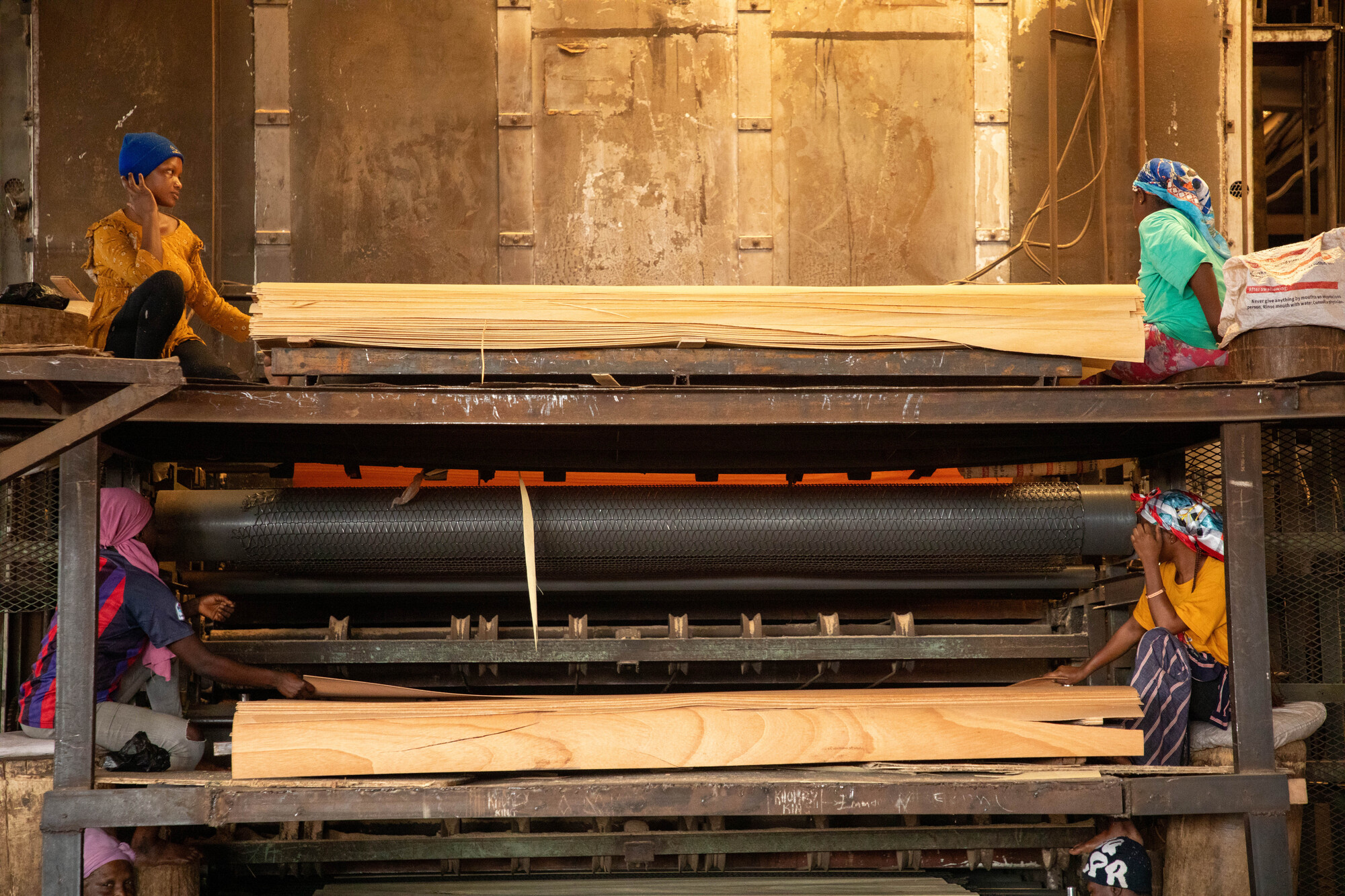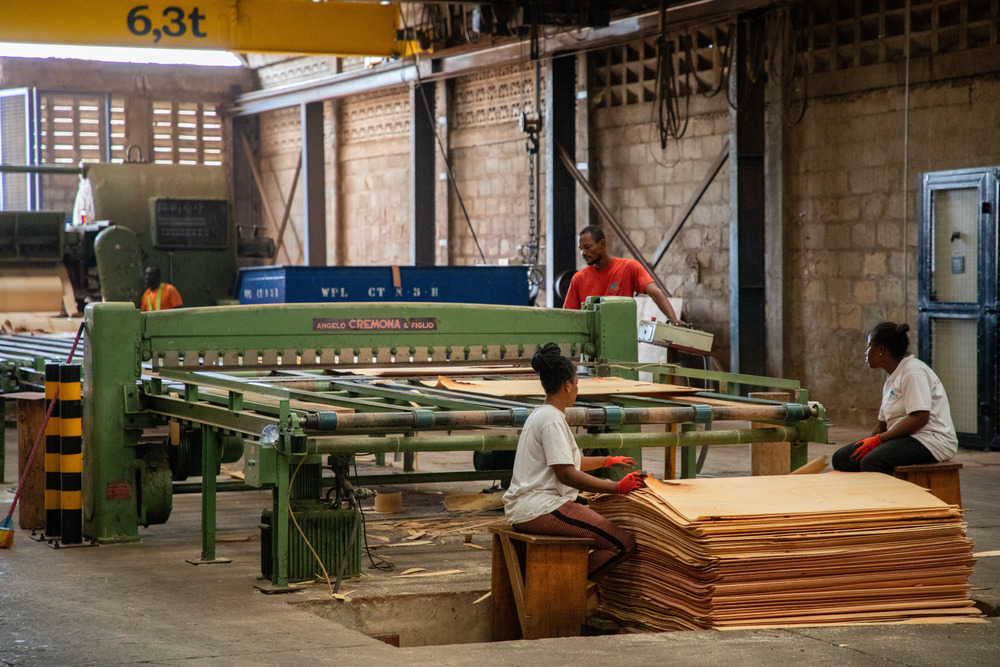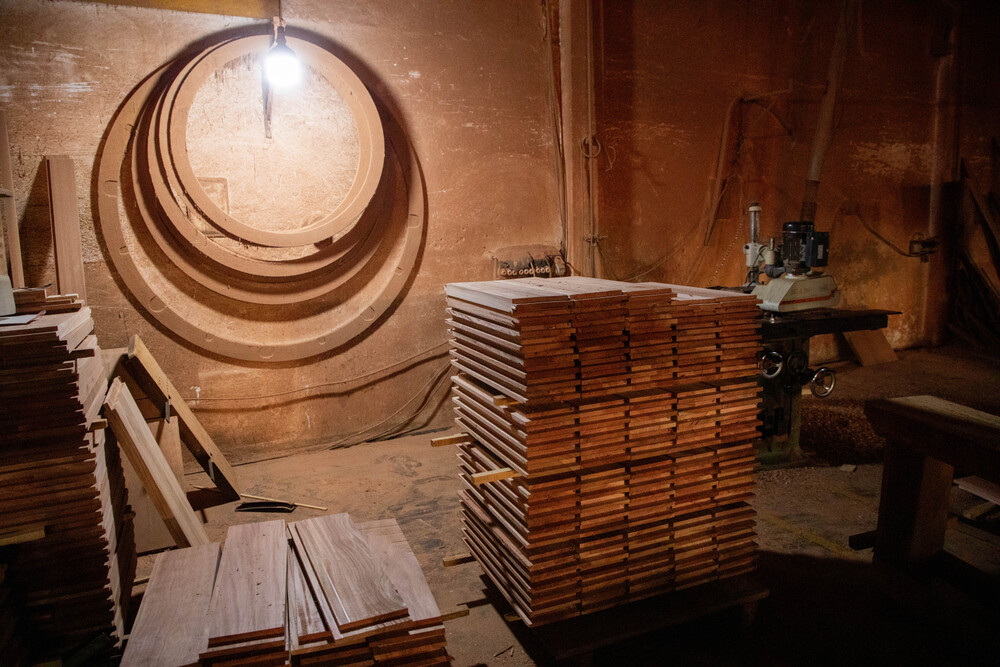GTI Report: Ghana timber sector improves in November, signs of stabilization elsewhere
19 December 2025, Yokohama

Workers at the processing plant of Ocean Wood Ghana Limited. © Peter Zormelo
Ghana’s timber sector continued its upward trend in November 2025 while some countries saw signs of stabilization, according to the latest Global Timber Index (GTI) Report. The ITTO-supported GTI tracks the performance of the timber sector in pilot countries in Africa, Asia, and Latin America.
The GTI for Ghana stood at 60.0% and has remained above the 50% threshold for several months. The GTIs for all other countries were in contraction territory. However, China (49.6%), the Republic of the Congo (49.6%), Brazil (49.5%), Indonesia (49.1%), and Thailand (49.1%) recorded figures near the threshold, indicating relative stability in their timber sectors. Ecuador (44.5%), Mexico (44.3%), Malaysia (33.2%) and Gabon (30.2%) posted lower readings, suggesting downturns in their timber sectors.

National sub-indexes revealed that Indonesia, Brazil, Ecuador, and China saw month-on-month increases in new orders. Ghana and Brazil recorded growth in both harvesting and production, signaling active supply-side performance in the two countries. However, the inventory of main raw materials continued to decline for several consecutive months in Malaysia, Thailand, Brazil, and Mexico, pointing to relatively tight raw material supply in these countries.
Specialized sub-indexes also indicated overall contractions in November. The GTI-Producers Index was at 48.5%, while the GTI-Woodbased Panel Index stood at 47.2%.
November also brought significant shifts in trade policies across many countries and regions. For instance, China’s General Administration of Customs announced the resumption of log imports from the United States effective 10 November 2025, ending an almost eight-month suspension and signaling a new supply variable into China’s timber import market.
On 26 November, Gabon’s transitional Senate approved a 2026 finance bill introducing a new differentiated export tax structure for the timber sector based on processing level—15% export duty for primary processed products, 10% for secondary, and 3.5% for tertiary processed products.
The latest GTI Report also highlights efforts to advance sustainable forest management in the pilot countries, including Indonesia's commitment to match Brazil's USD 1 billion contribution to the Tropical Forest Forever Facility, progress under the Malaysian Timber Certification Scheme, and advances in Ecuador’s national REDD+ policy implementation.
The monthly GTI Report, GTI-Producers Report and GTI-WBP Report are available at www.itto.int/gti/.
